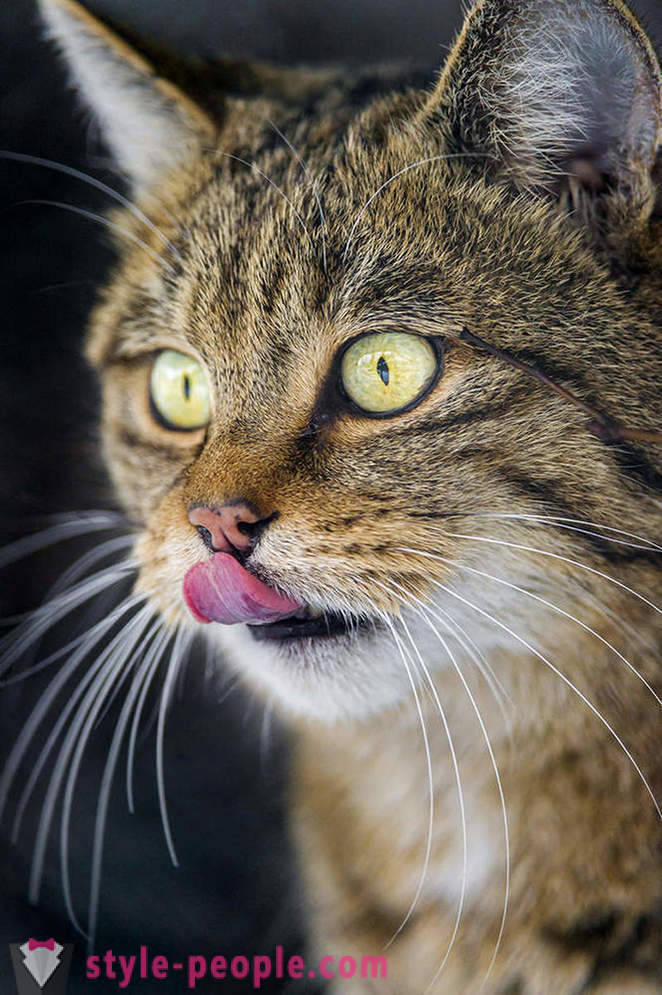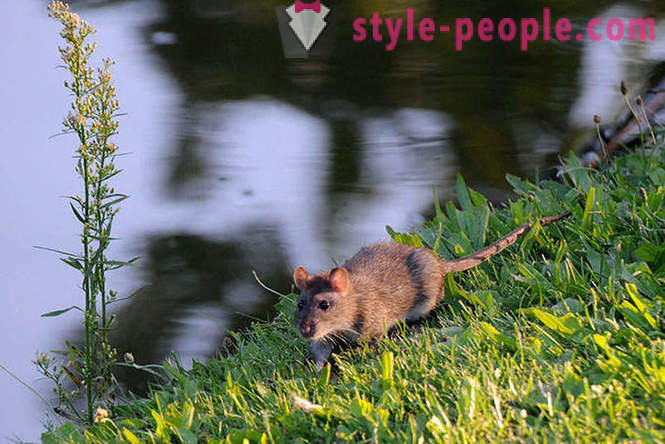Rating of the most brazen invaders
• Rating of the most brazen invaders
Sometimes harmless at first glance, rabbits, squirrels and starlings can be a real disaster for the man. This is evidenced by the numerous situations recorded in different parts of the Earth. It is worth noting that the threat to our smaller brothers can carry in case of an uncontrolled seizure, but rather abnormal growth of the population of a species. This happens due to the lack of natural enemies in a given area. Excessive multiplication in danger for agriculture or the threat of destruction of other beings.

Even rabbits can become the aggressor - it is enough to carry them ( "be introduced" as scientists say) to a place where they will be deprived of many natural enemies. What actually happened in Australia, after the farmer Thomas Austin decided to release two dozen Freedom "eared".

It is said that kudzu (Pueraria montana) - a place the Japanese who use this plant as food for the Second World War. In the US, it was brought to combat erosion of clay soil, but in the new territory for themselves kudzu instantly become a pernicious weed.

The Dark tiger python - an example of how wild "pets" can harm the ecosystem that occurred in Florida due to the fault of compassionate enthusiasts "exotic." Now pythons eat rare birds and even young alligators in Evergeylds National Park, and they have to be exterminated.

In 1890, the richest druggist Eugene Sheffelin officially released in Central Park, New York 60 European starlings, a year later - 40. It is unlikely that he suspected that the "gift" will cause damage to agriculture in the amount of $ 1 billion annually, not to mention the numerous crashes provoked by demoniac flocks of immigrants.

In the reverse direction followed Caroline protein. It so happens that, in comparison with its red cousin is not only better suited to life in the city, but also behaves bolder. In addition, Caroline white red bigger and stronger, in addition carries the virus, to which others do not have immunity protein. The invasion led to the fact that the number of red squirrels in Albion greatly reduced. According to British law gray squirrel is considered a pest, and hunting it is strongly encouraged.

Do you think the incident with the rabbits learned something Australians? Far from it. In 1935, the continent brought huge poisonous cane toads aha - for pest control. At the new place 60 thousand. Toads kill pests did not want to, but they liked the local lizards, frogs, bees and even small animals. Poisoning the victim skin secretions, cane toad capable of a few days to devour the small kangaroo.

A similar dilemma in New Zealand - the main "culprit" of the critical reduction in the population of rare birds kiwi ... became a domestic cat. Imagine the expanse of New Zealand made a Murka and mushrooms with the flightless kiwi, which neither fly nor escape just can not.

In the third place in our ranking - snakehead. This freshwater "Nibbler" not only looks menacing, but behaves appropriately, giving odds of gluttony and aggression of any pike. "Trump" snakehead is that it easily transfers an oxygen deficit. Can live out of water up to five days, crawling between bodies of water over long distances. In 2013, the snakehead was the territory of the United States ... We can only sympathize with the local freshwater fish!

Extremely aggressive invader - Africanized honey bees - has been bred by man and accidentally released into the wild, as if some sort of virus. In Brazil, where it first appeared in 1957 and has since killed thousands of people, it was referred to as "killer bees." Roy Africanized bees attack any animal that came within five meters of the hive in pursuit of the "victim" of half a kilometer. Now the bees are steadily moving north to Canada, displacing their weaker neighbors.

Oh, and the kings of adaptability - is, of course, common rat. Currently they are found on all continents except Antarctica. Conquer the world of gray rats was possible thanks to passive dispersal, mainly on ships, the propensity to Peking Man, omnivorous, high research activity, rapid learning, and extremely high fertility.













































